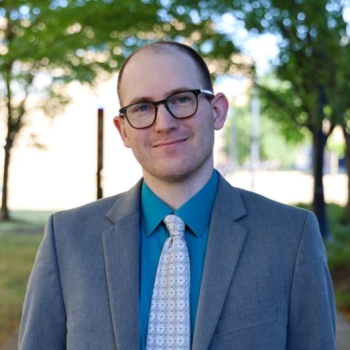Robert Hood, PhD
Assistant Professor
Epidemiology

“Every day, people come into contact with many different human-made chemicals. I think it is critically important to better understand how these chemicals impact not only our health today but the health of future generations.”
Biography
Dr. Hood is a maternal and child health epidemiologist with a focus on environmental and infectious exposures. Dr. Hood’s educational training and research has spanned several subdisciplines in epidemiology including cancer, infectious disease, environmental exposures and maternal and child health. His current research focuses on the impacts of endocrine disrupting chemicals on reproductive health including maternal and child health and development. Dr. Hood applies omics to understand the underlying biological pathways between environmental exposures and alterations in reproductive health. In the future, Dr. Hood hopes to understand how infectious diseases and endocrine disrupting chemicals interact to cause adverse maternal and child health outcomes.
Education
- Postdoctoral Fellowship
- Environmental Epidemiology, Emory University, 2023
- PhD
- Public Health, Ohio State University, 2020
- MPH
- Epidemiology, University of Georgia, 2015
- BS
- Biology & Public Health, Baldwin Wallace University, 2014
Research interests
Maternal & Child health; Exposome; Endocrine disrupting chemicals; Bloodborne infections; Sexually transmitted infections; Omics; Big data; Community engaged research
Select publications
- Hood RB, Everson TM, Ford JB, Hauser R, Knight A, Smith AK, Gaskins AJ. Epigenetic age acceleration in follicular fluid and markers of ovarian response among women undergoing IVF. Hum Reprod. 2024 Jun 18:deae136.
- Hood RB, Nelson J, Minguez-Alarcon L, Ford JB, Hauser R, Jones D, Liang D, Gaskins AJ. The associations between pre-conception urinary phthalate concentrations, the serum metabolome, and live birth among women undergoing assisted reproduction. Environ Res. 2024 Jul 1;252(Pt 4):119149.
- Hood RB, Norris AH, Shoben A, Miller WC, Harris RE, Pomeroy LW. Forecasting Hepatitis C Virus Status for Children in the United States: A Modeling Study. Clin Infect Dis. 2024 Apr 17:ciae157.
- Hood RB, Terrell ML, Mardovich S, Somers EC, Pearson M, Barton H, Tomlinson MS, Marder ME, Barr DB, Marcus M. Polybrominated biphenyls (PBBs) and prevalence of autoimmune disorders among members of the Michigan PBB registry. Environ Res. 2023 Dec 15;239(Pt 1):117312.
- Hood RB, Hart JE, Laden F, Rosner B, Chavarro JE, Gaskins AJ. Exposure to Particulate Matter Air Pollution and Age of Menarche in a Nationwide Cohort of U.S. Girls. Environ Health Perspect. 2023 Oct;131(10):107003.
- Hood RB, Terrell ML, Smith AK, Curtis S, Conneely K, Pearson M, Barton H, Barr DB, Marder EM, Marcus M. Elimination of PBB-153; findings from a cohort of Michigan adults. Environ Res. 2023 Mar 1;220:115146. doi: 10.1016/j.envres.2022.
- Hood RB, Liang D, Tan Y, Ford J, Souter I, Jones DP, Hauser R, Gaskins AJ. Characterizing the follicular fluid metabolome: quantifying the correlation across follicles and differences with the serum metabolome. Fertil Steril. 2022 Nov;118(5):970-979.
- Hood RB, Moseson H, Smith M, Chakraborty P, Norris AH, Gallo MF. Comparison of abortion incidence estimates derived from direct survey questions versus the list experiment among women in Ohio. PLoS One. 2022 Jun 3;17(6):e0269476.
- Hood RB, Liang D, Tang Z, Kloog I, Schwartz J, Laden F, Jones D, Gaskins AJ. Length of PM2.5 exposure and alterations in the serum metabolome among women undergoing infertility treatment. Environ Epidemiol. 2022 Feb 4;6(1):e191.
- Hood RB, Liang D, Chiu YH, Sandoval-Insausti H, Chavarro JE, Jones D, Hauser R, Gaskins AJ. Pesticide residue intake from fruits and vegetables and alterations in the serum metabolome of women undergoing infertility treatment. Environ Int. 2022 Feb;160:107061.